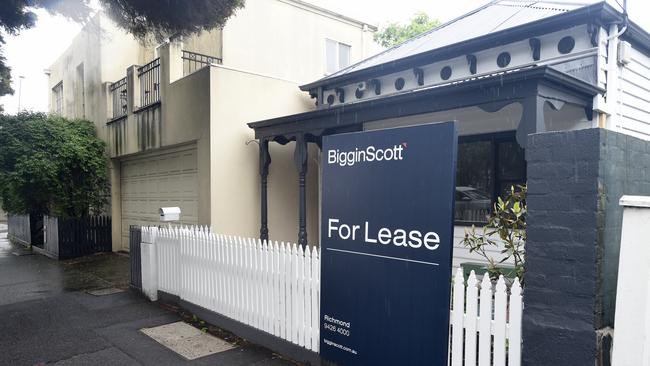Property investors in race for the exit in Victoria
Investors are exiting Victoria’s already tight rental market, with landlords struggling to keep up with rising costs from new tenant-friendly laws and higher taxes.

Investors are abandoning Victoria’s already tight rental market, with landlords unable to keep up with soaring costs from new tenant-friendly laws and higher taxes, real estate agents have warned.
Kelly Ryan, CEO of the Real Estate Institute of Victoria, said while the body supported the 2021 changes, the Victorian government’s subsequent imposition of a “sharp increase” to land tax payable on investment properties and a proposal to add additional minimum standards relating to energy efficiency, on top of increased interest rate rises, meant owning an investment property had become “untenable” for many landlords.
“The investors leaving the Victorian market right now is like nothing we’ve seen before, with many people just not able to sustain the quantum of changes,” Ms Ryan said.
In 2021, the Victorian government introduced a suite of new laws, including prohibitions on rent bidding and no-grounds evictions, as well as the requirement for landlords to comply with minimum standards covering things such as ventilation, heating, door locks, bathroom and kitchen facilities, electrical safety, lighting, window coverings, mould and dampness, and structural soundness.
Ms Ryan said investors would continue to leave the Victorian market, which would “exacerbate the housing crisis” over the next couple of years. “Unfortunately, now we just don’t have enough properties to service those that need to rent,” she said.
According to the Victorian government’s Homes Victoria Rental Report, the total number of new lettings in the 2024 March quarter was 52,514, a decrease of 11.8 per cent on the 2023 March quarter.
At the end of the 2024 March quarter, the total number of active bonds held in Victoria, which provides an indicator of the stock of rental housing, was 658,106, down 2.3 per cent from the number recorded a year ago.
“On average, the number of active bonds has increased by 3.1 per cent annually over the past 10 years,” the report states.
Cameron Kusher, director of economic research at PropTrack, said new rental listings on realestate.com.au for June were down 16.8 per cent compared to a year ago in Melbourne, and down 13 per cent in regional Victoria. “The total amount of rental stock advertised for rent was down 0.8 per cent from a year ago in Melbourne, and 4.9 per cent in regional Victoria,” he said.
In addition to investors leaving the market, there were also fewer entering, with the value of housing finance commitments to investors nationally over the past year increasing by 29.5 per cent, while in Victoria that growth has only been about 14.5 per cent. “That’s half the rate of growth that you’re seeing nationally,” he said.
Luke Piccolo, director of Woodards South Yarra, manages about 1000 properties owned by private investors. He said the “prescriptive nature” of the minimum standards and increased land tax costs were creating an environment where investors were incentivised to sell.





To join the conversation, please log in. Don't have an account? Register
Join the conversation, you are commenting as Logout